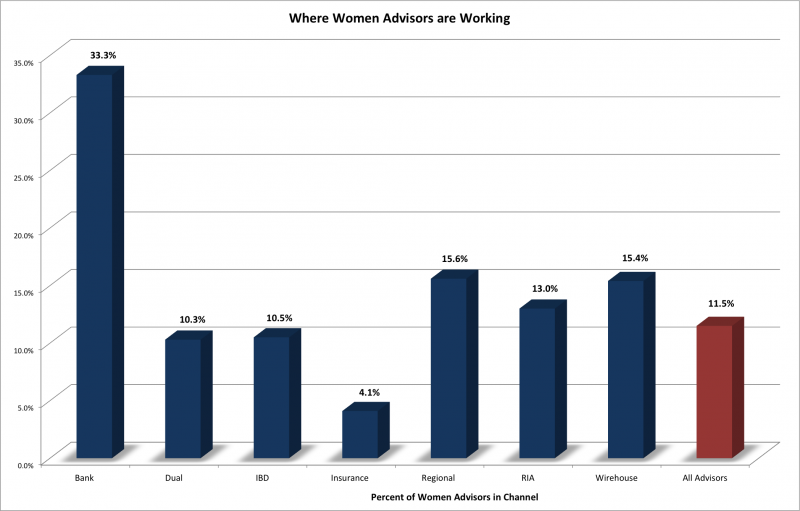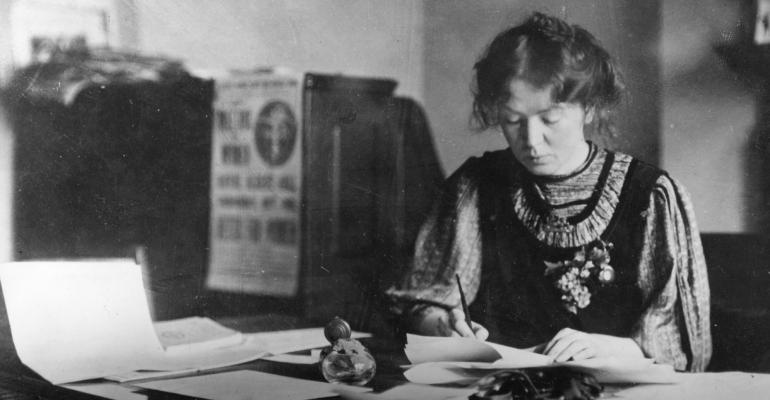The number of women in financial services is growing, but banks are leading the way. According to data provided by Cerulli Associates, women now represent 11.5 percent of all financial advisors, up from the 7.9 percent the firm reported in 2012.
Some of the recent increase can be attributed to the focus on women advisors. In recent years, there have been a lot of broker/dealers who have focused on diversifying their advisor force, concentrating specifically on women advisors, says Bing Waldert, director at Cerulli Associates. He highlighted Raymond James as an example of one firm that has really focused on increasing the number of women advisors, going as far as specialized networks and conferences.

But it’s the bank channel has the highest concentration of women (33.3 percent), almost double the concentration found in the wirehouses (15.4 percent) and independent broker/dealers (15.6 percent).
“We see the bank channel as one of the places where new advisors will start their career,” Waldert says. “Because the industry has been so male dominated, we'd attribute the high percentage of women to new advisors entering the industry.”
“Women tend to be more risk averse than their male counterparts,” says Mindy Diamond, head of recruiting firm Diamond & Associates and a member of the CFP Board’s Women's Initiative. “So the bank channel is likely a place where a woman advisor would feel more secure—she would have access to a warm lead source via referrals from bankers.
Diamond also points out that some bank models, like at the private banks, utilize salary and bonus compensation structures, which provides a sense of security. Bank brokerages are more team-based and collaborative, which also would likely appeal to women more.

